In Quintana Roo, a park mesmerises with its geometric pavilion
A Mexican events venue in the state of Quintana Roo rings the changes with a year-round pavilion that fosters a strong connection between its users and nature
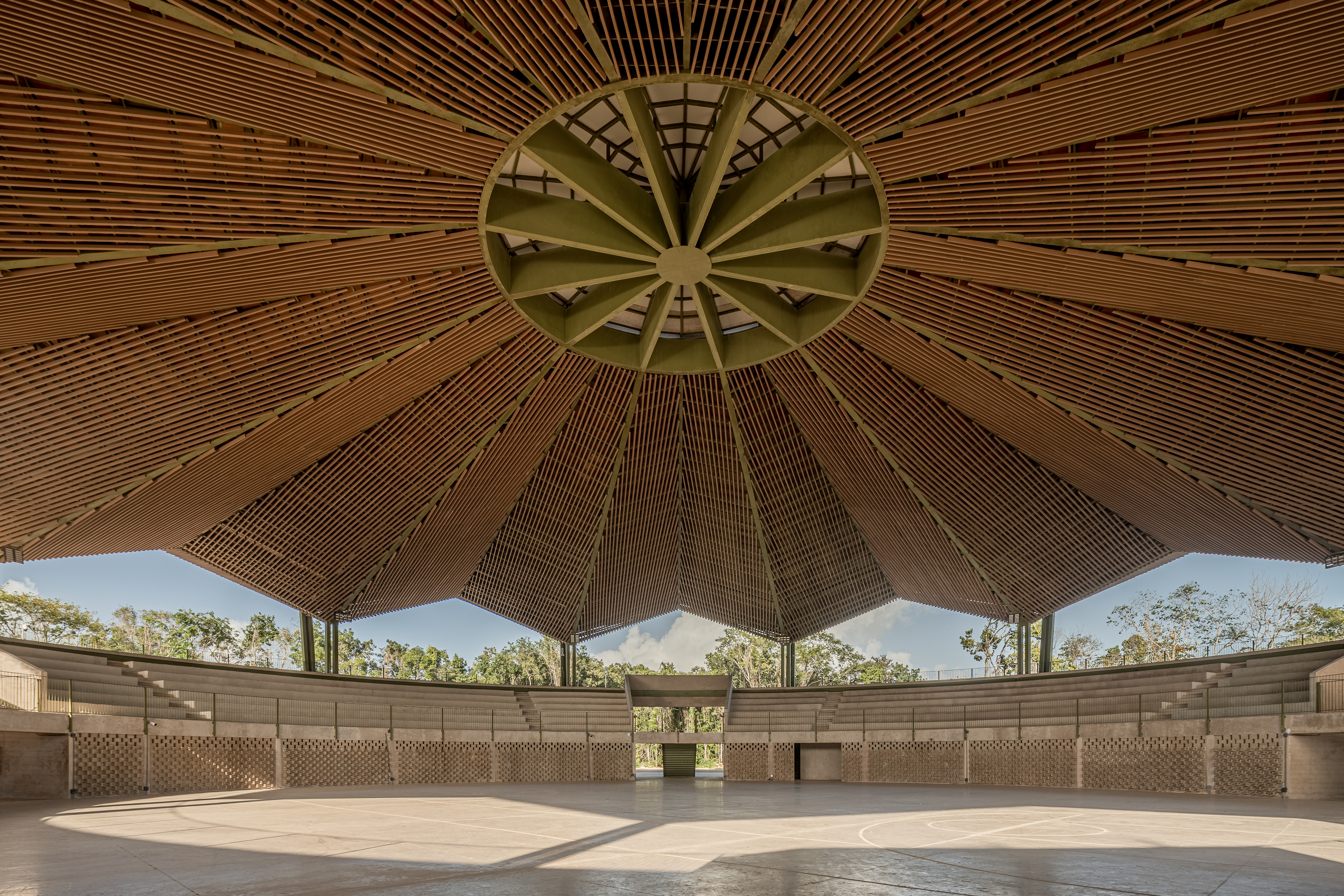
A once-neglected venue for an annual livestock and agricultural event in Chetumal, Quintana Roo – a south-east Mexican state – has been refreshed as a multifunctional fairground wrapped by a verdant urban park. The project, a government commission won by the London- and Mexico City-based architecture practice Aidia Studio, is situated on the outskirts of Chetumal and borders the lush foliage of the Yucatán Peninsula’s subtropical forest. Consisting of a series of light, seemingly floating, round pavilions with geometrically patterned roofs, the scheme creates an otherworldly image when seen from above; yet this family of structures was crafted with pragmatism in mind, as well as a strong desire for it to become embedded into the local community, responding to its needs and wellbeing.
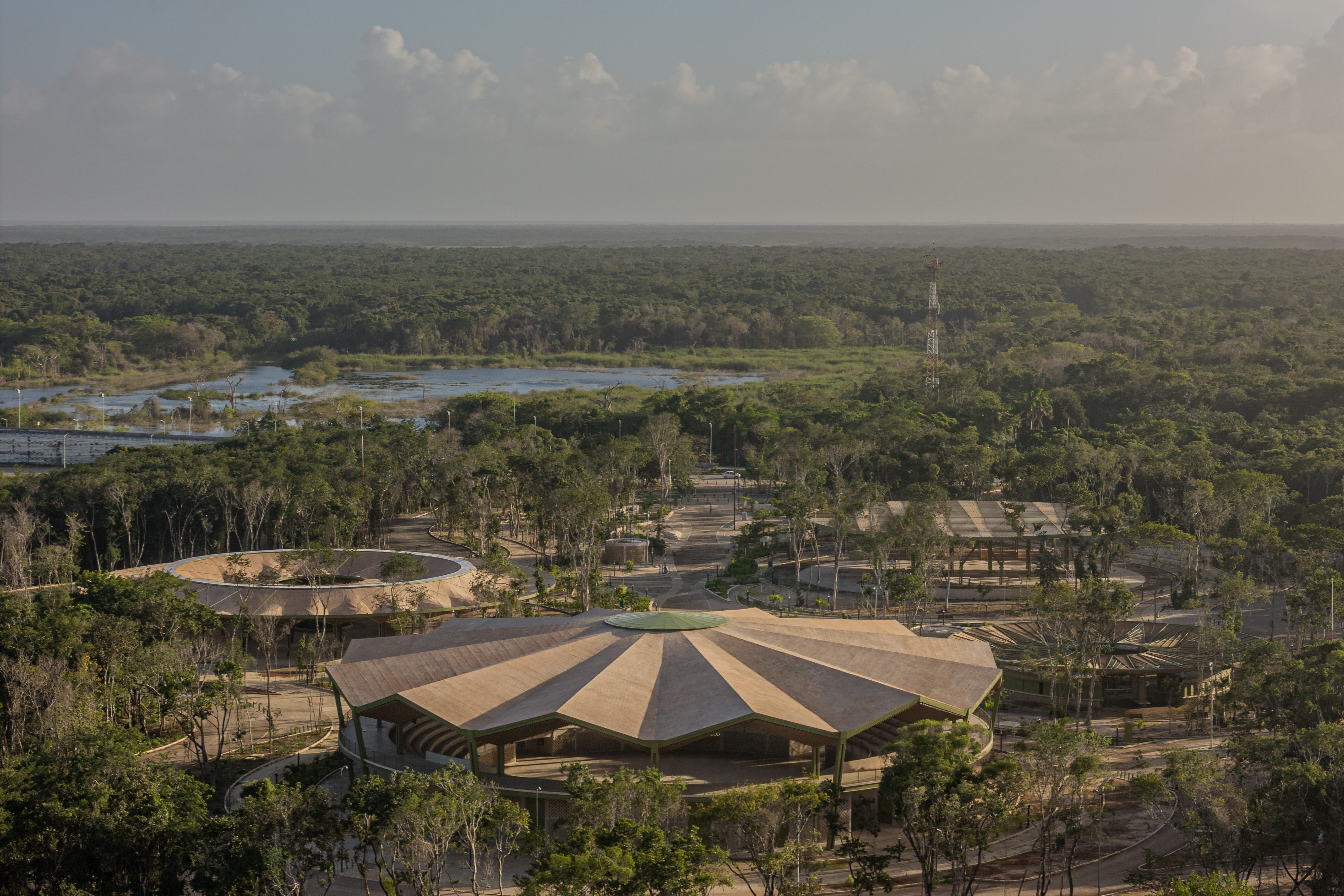
The studio studied the project’s site and its wider area – ten hectares surrounded by jungle, next to a 20km-long boardwalk that runs along an estuary popular with families, cyclists and pedestrians. ‘The primary challenge was to create a facility that could be used year-round while designing structures that could accommodate a variety of uses and events,’ says Aidia Studio’s co-founder Rolando Rodriguez-Leal. ‘The project aligned with our studio’s ongoing commitment to biophilic design, which emphasises the importance of creating environments that foster a strong connection between users and nature. In the context of the park, this connection is achieved both literally and through the evocative architectural forms.’
Tour the new Quintana Roo park
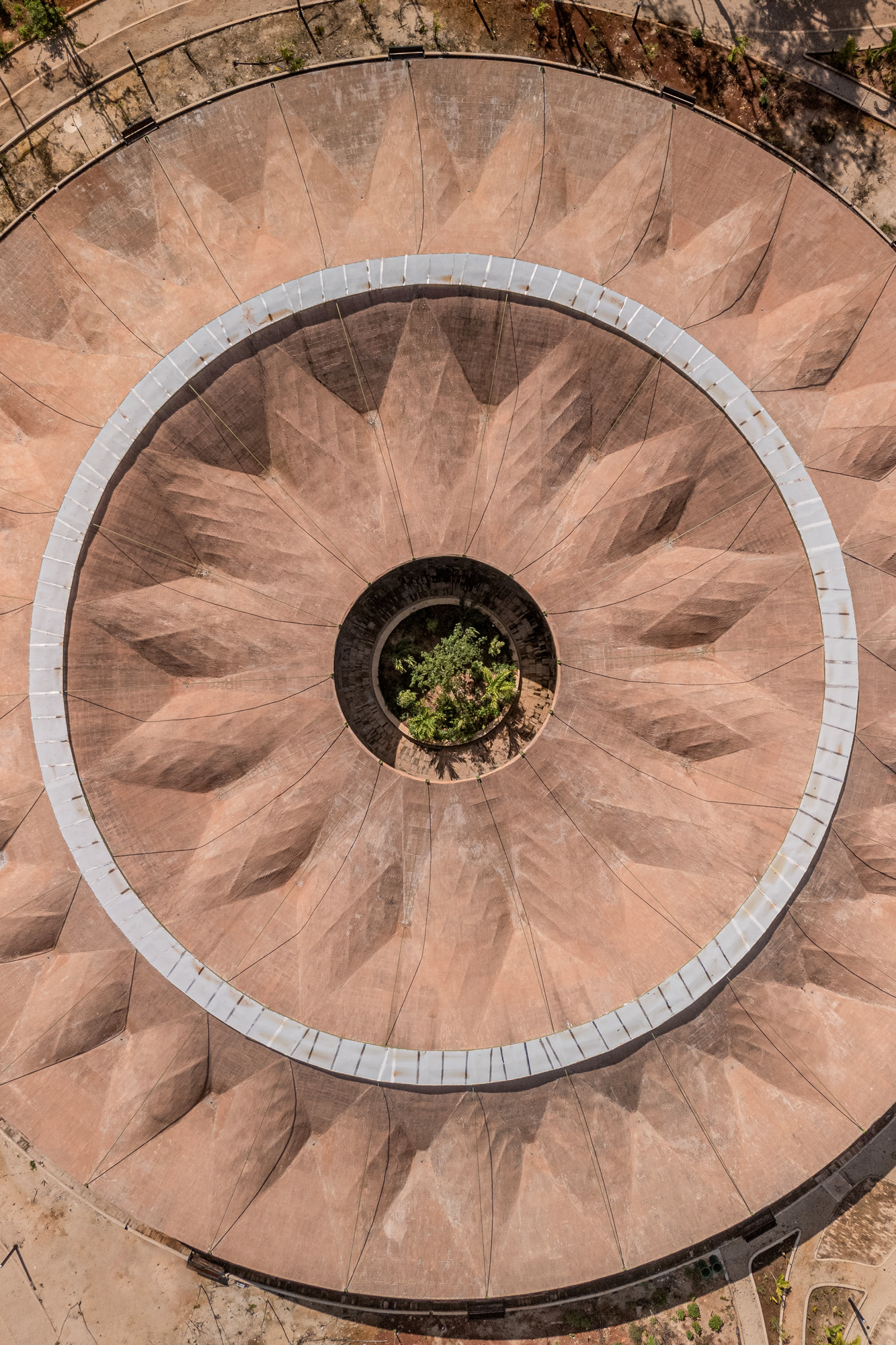
The pavilions – open to the air but providing thick shade to protect from the region’s hot sun – create a perfect home for the fair while in operation. They also provide a platform that allows for a variety of community events throughout the year, supported by a number of facilities on site. There is a 1,000-person capacity arena for sports and concerts, covered basketball courts, a skate park, shops, a playground, a civic square and callisthenics equipment. It’s a remarkable feat considering the scheme’s budgetary and time constraints, with Rodriguez-Leal noting there was ‘a stringent construction timeline of 12 months’.
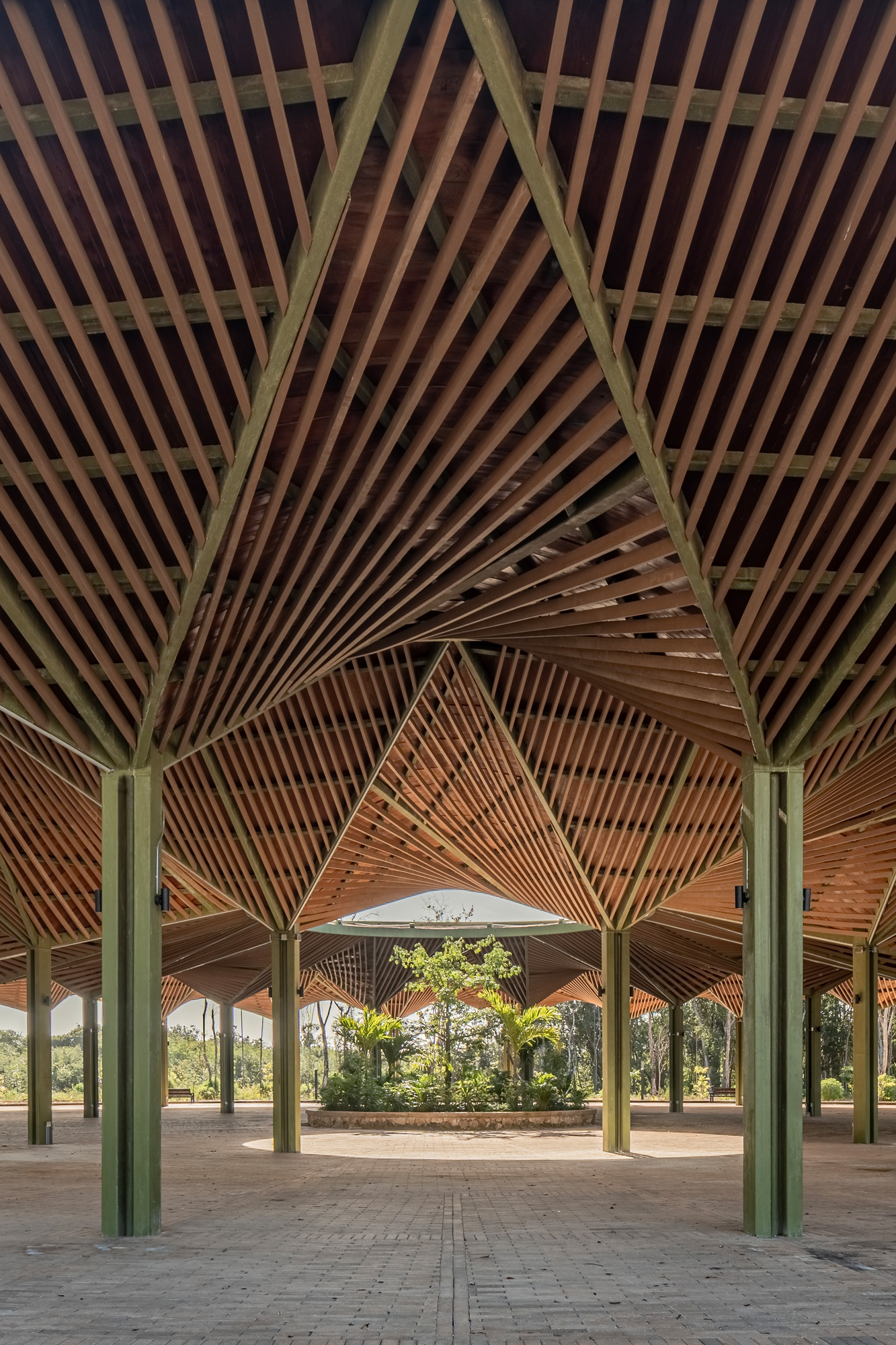
He adds, ‘From the beginning, our objective was to create a tension between the circular footprint of the pavilions and the meandering, delta-inspired pathways that connect them. We recognised the potential for visitors to explore these features while wandering through the greenery, allowing them to detach from the strict orthogonal grid that characterises Chetumal and become enveloped in the natural environment.’
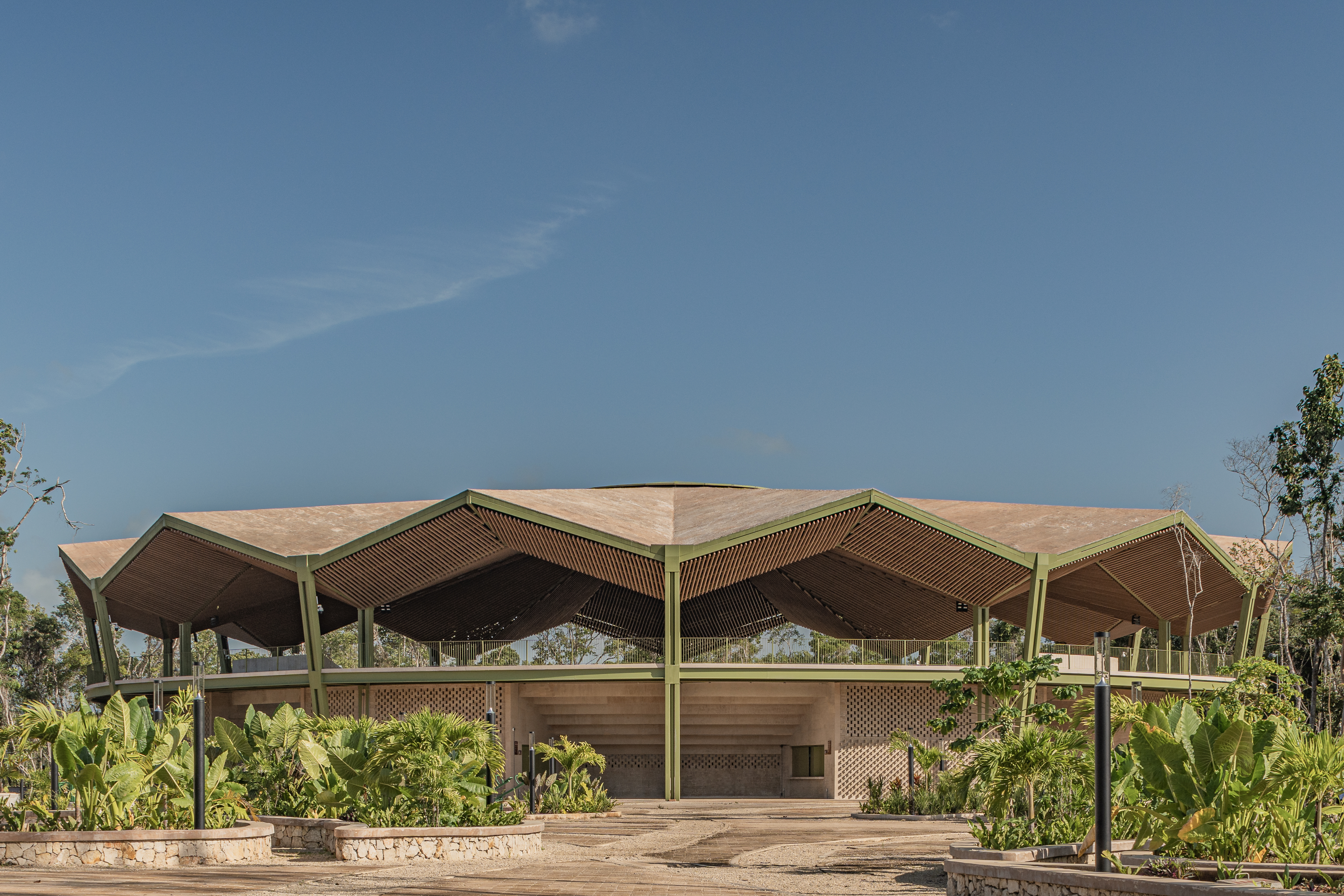
Following this approach, nature is woven into the design as an important part of the project. Eleven ceiba trees, a species indigenous to the area that can grow up to 70m tall, mark the borders of a square at the park’s entrance and act as symbols for each of Quintana Roo’s 11 municipalities. Elsewhere, a mix of chit palms and banana trees, both known to thrive in the region, dot the campus. ‘Throughout the design process, we prioritised nature as the central element, aiming to create structures that would be partially concealed by the trees over time. This approach not only provides shade for visitors, but also enriches the experience of being in a tropical park,’ says Rodriguez-Leal.
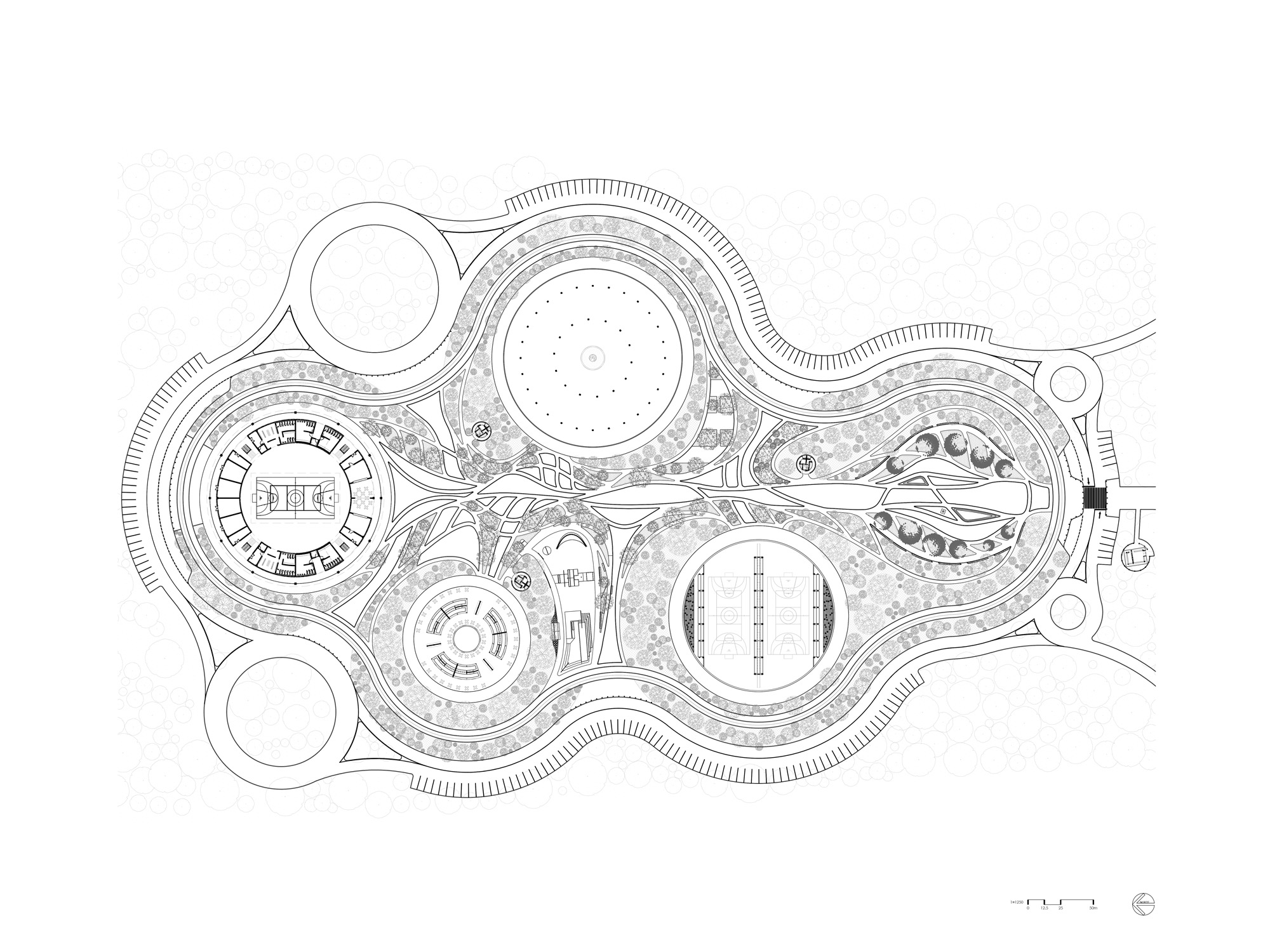
The architects’ plan
As earthy and nature-inspired as the concept may seem, it was designed using cutting-edge architectural technology, such as parametric tools that allowed
for tailor-made adaptations of hyperbolic paraboloids and customised form-finding. Still, the overall low density of the complex throughout ensures existing foliage is preserved as much as possible. This helps to cool down the park in what can be an intensely hot and humid climate. The studio’s biophilic approach is reflected in the chosen material palette – olive green steel columns, clay-tiled roofs and cladding, and wood details help the structures to blend in with the surrounding trees. Brick patterns, meanwhile, add texture while supporting natural ventilation, and modular elements brought costs, building site timings and environmental impact down as they can easily be disassembled if necessary.
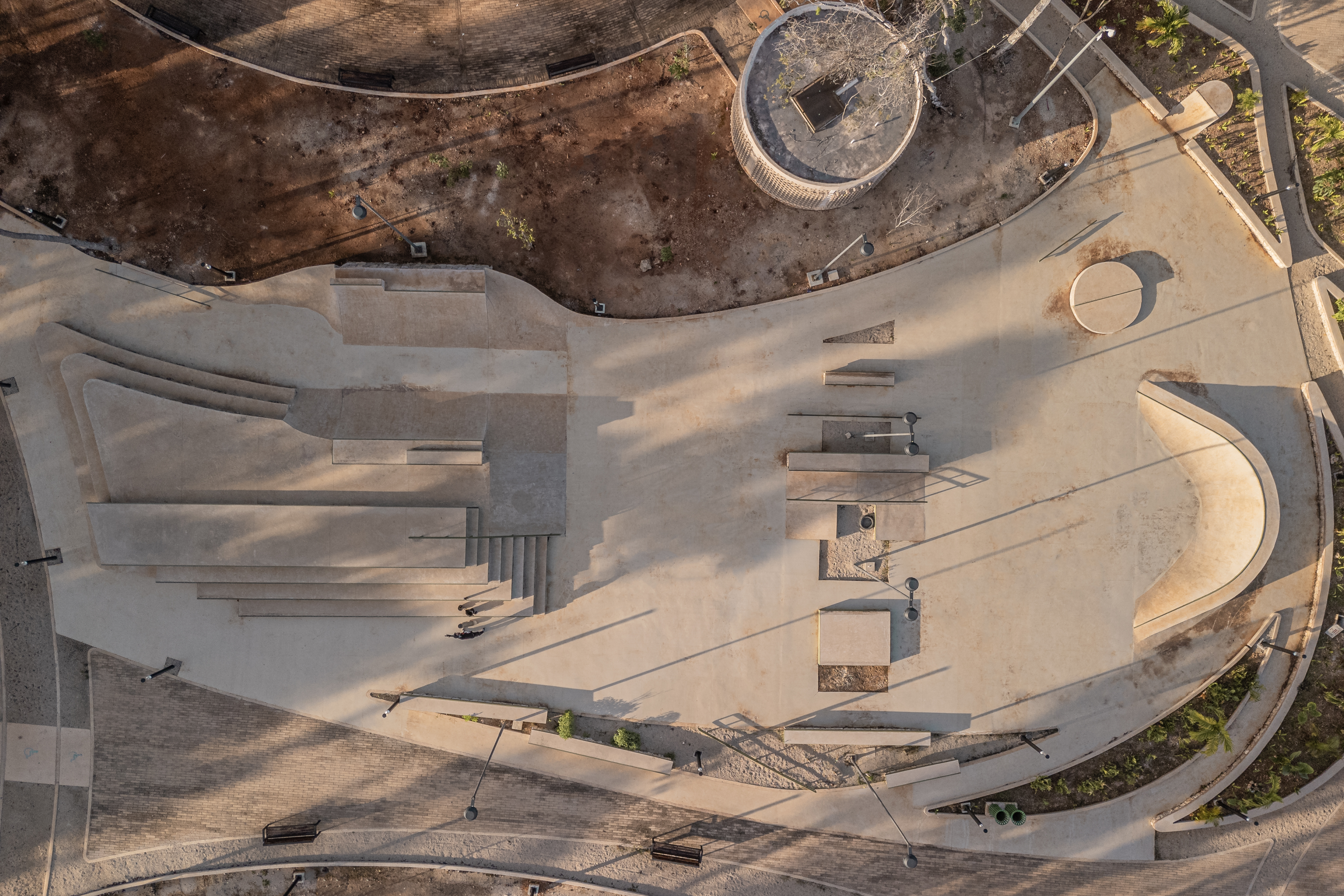
Receive our daily digest of inspiration, escapism and design stories from around the world direct to your inbox.
Ellie Stathaki is the Architecture & Environment Director at Wallpaper*. She trained as an architect at the Aristotle University of Thessaloniki in Greece and studied architectural history at the Bartlett in London. Now an established journalist, she has been a member of the Wallpaper* team since 2006, visiting buildings across the globe and interviewing leading architects such as Tadao Ando and Rem Koolhaas. Ellie has also taken part in judging panels, moderated events, curated shows and contributed in books, such as The Contemporary House (Thames & Hudson, 2018), Glenn Sestig Architecture Diary (2020) and House London (2022).
-
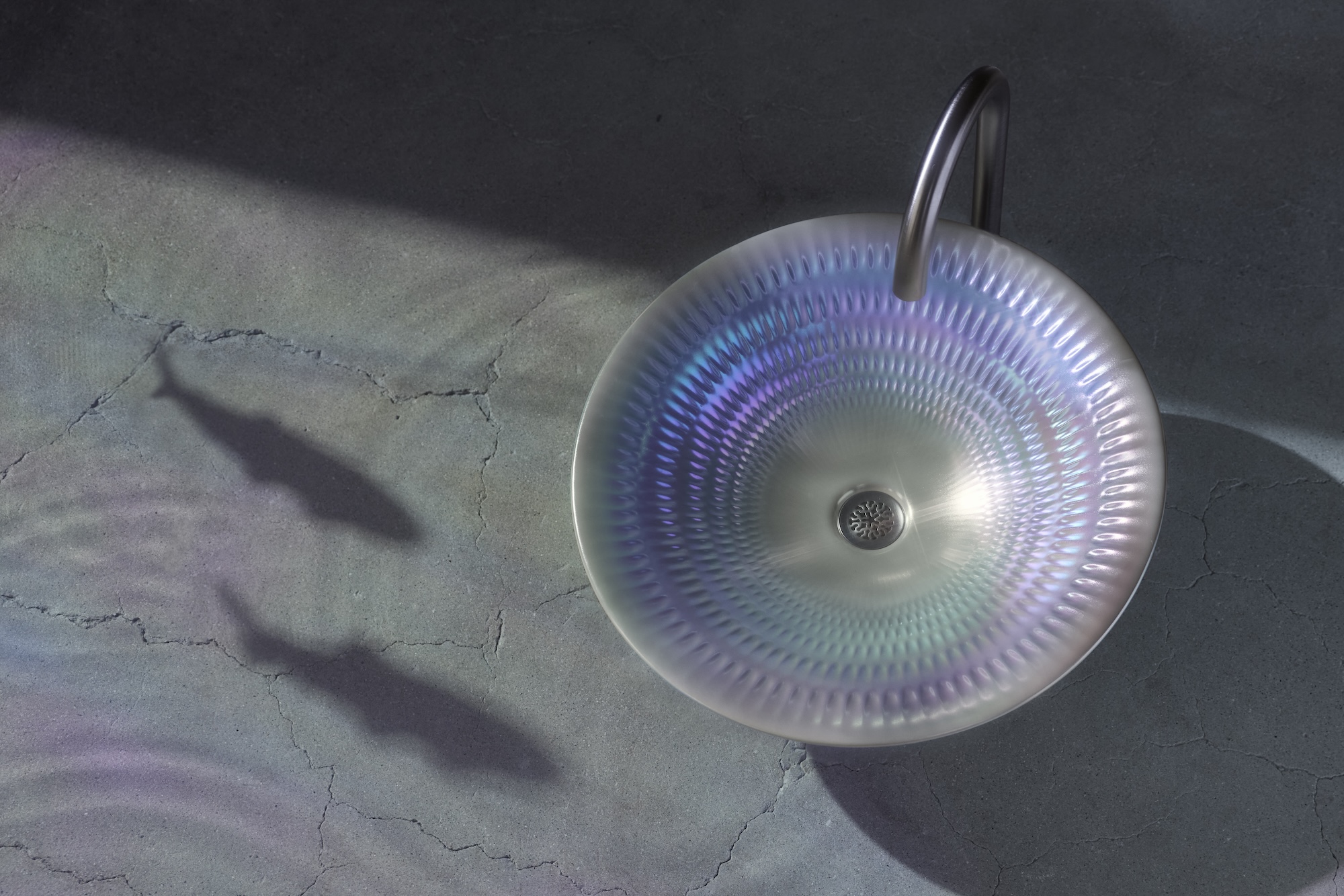 Kohler unveils ‘Pearlized,’ an iridescent new finish with an under-the-sea backstory
Kohler unveils ‘Pearlized,’ an iridescent new finish with an under-the-sea backstoryArtist David Franklin was inspired by glimmering fish scales and sunsets for this mesmerising debut
-
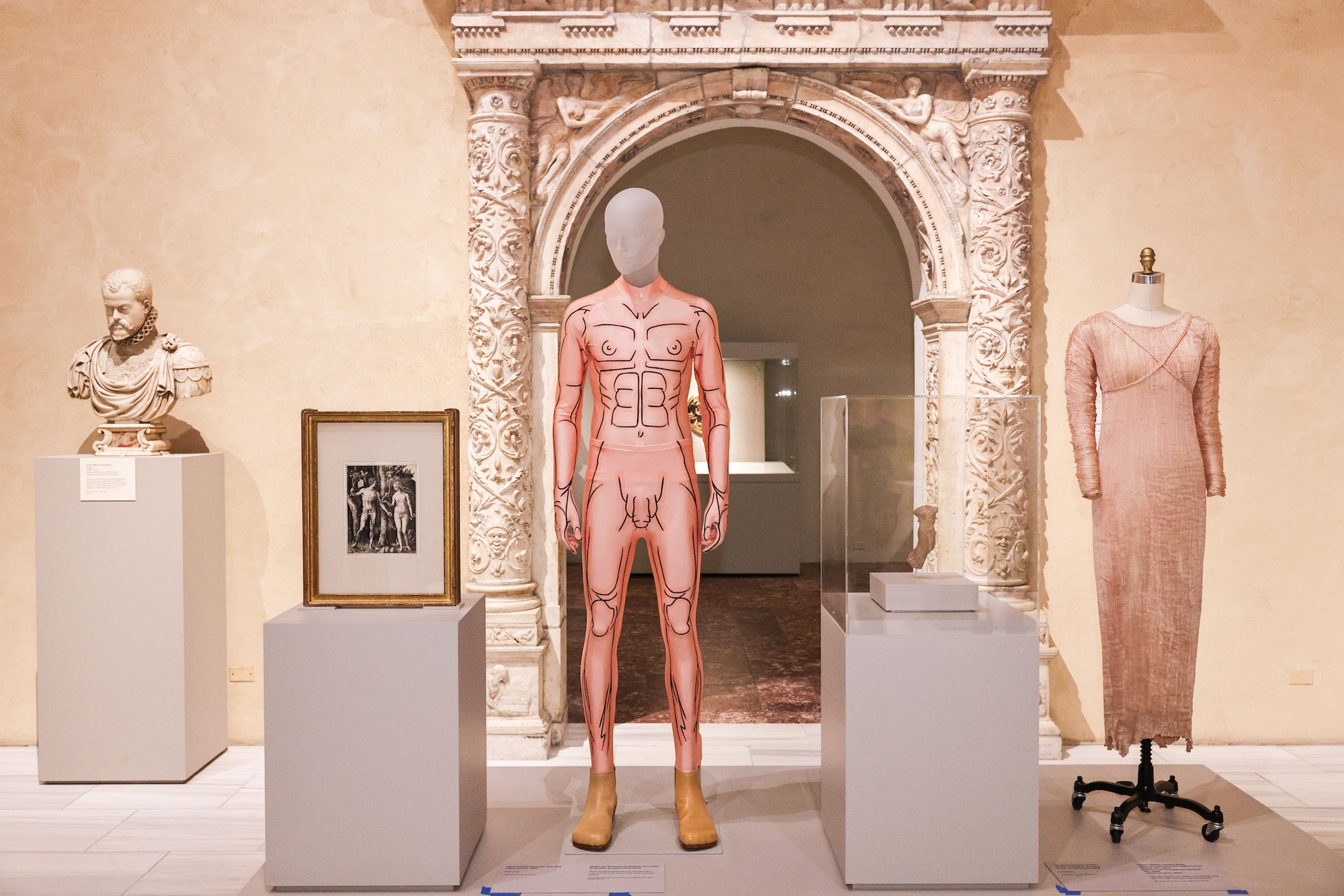 The Met reveals its 2026 Costume Institute show along with another major milestone
The Met reveals its 2026 Costume Institute show along with another major milestoneThe First Monday in May just became a much bigger deal...
-
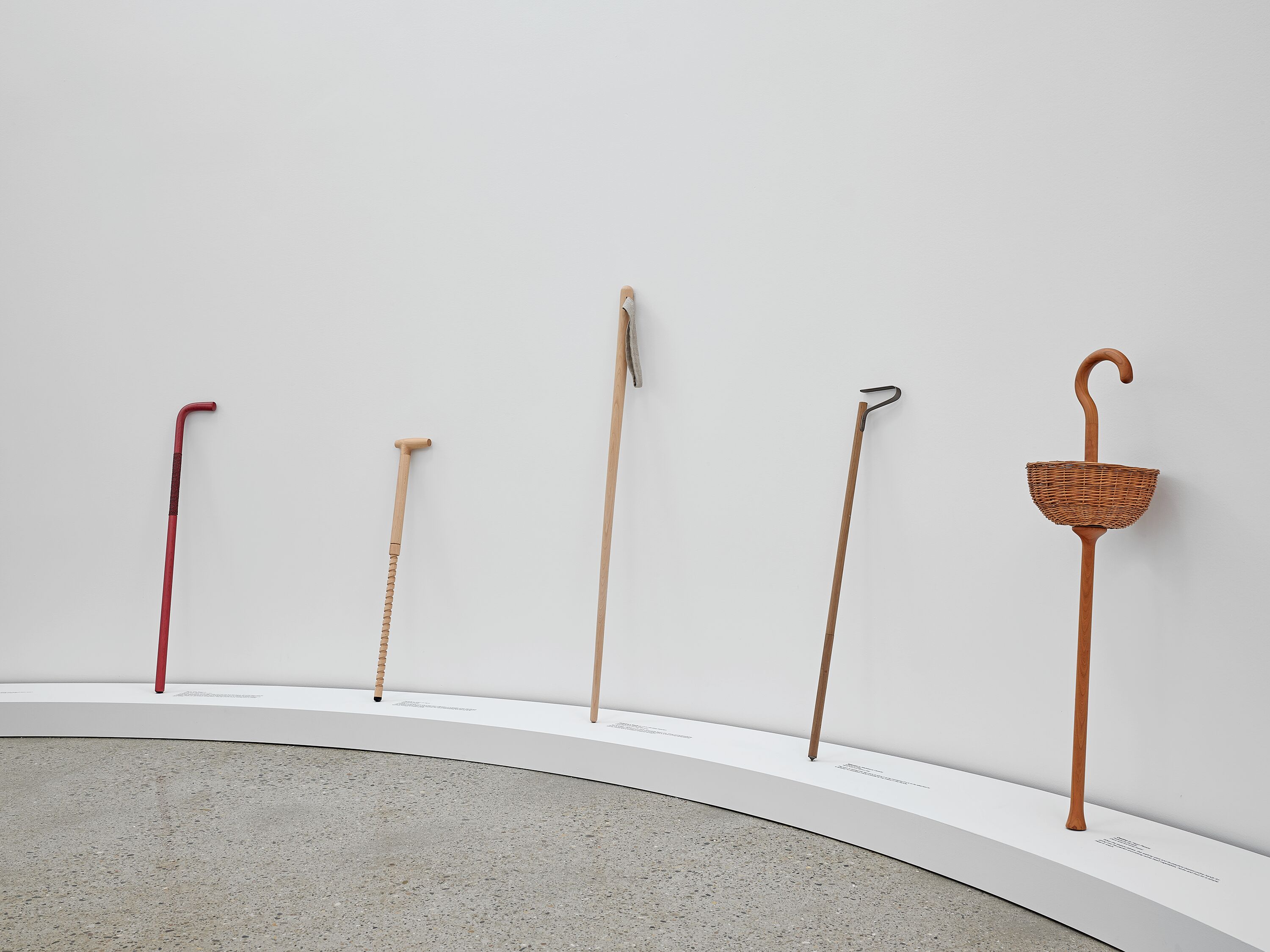 MillerKnoll's renovated flagship in New York opens doors to design experiences
MillerKnoll's renovated flagship in New York opens doors to design experiencesThe new MillerKnoll New York gallery space makes its debut with Keiji Takeuchi’s ‘Walking Sticks & Canes’ exhibition, supported by Triennale Milano
-
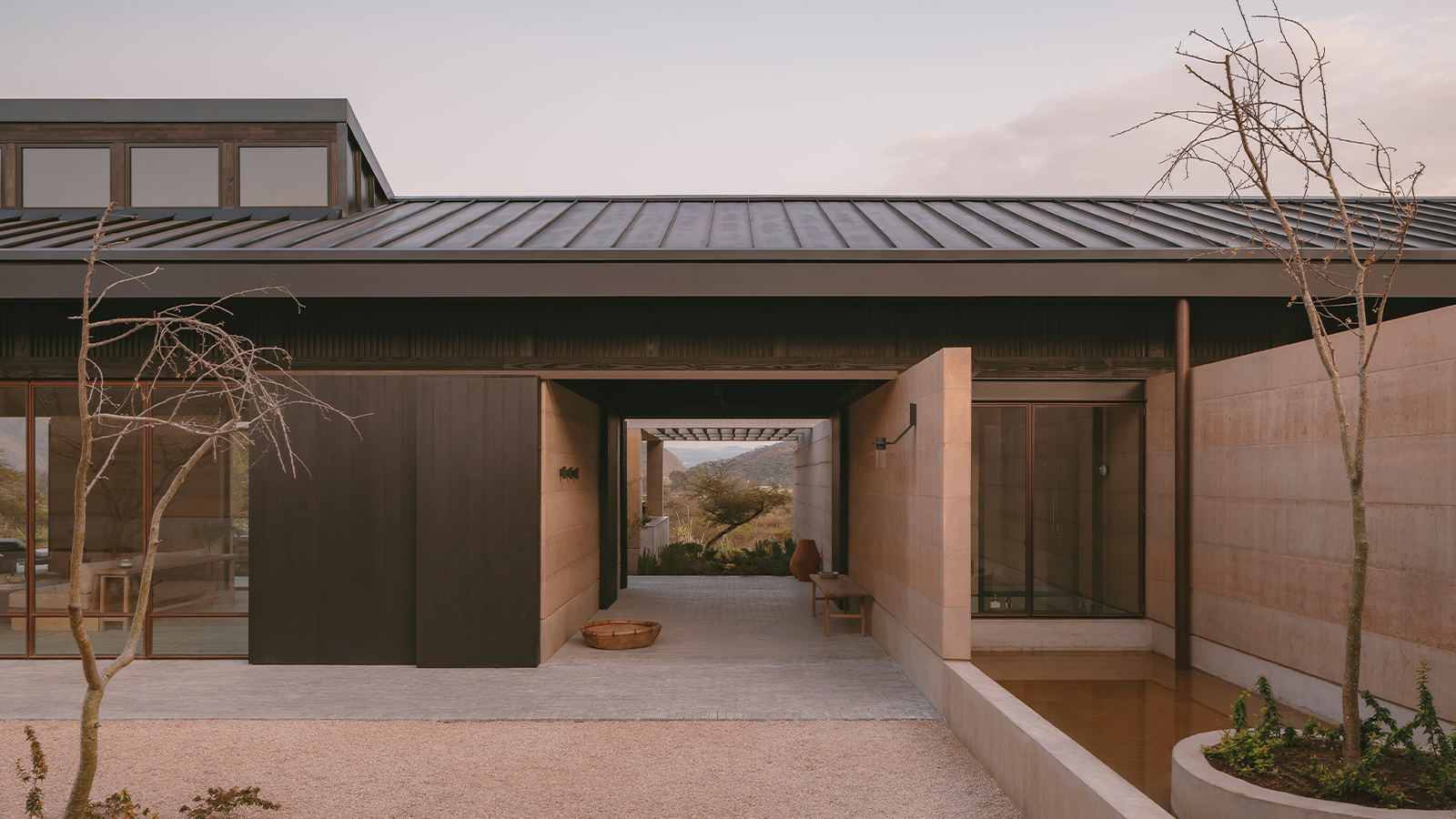 Serenity radiates through this Mexican home, set between two ravines
Serenity radiates through this Mexican home, set between two ravinesOn the cusp of a lakeside town, Mexican home Casa el Espino is a single-storey residence by Soler Orozco Arquitectos (SOA)
-
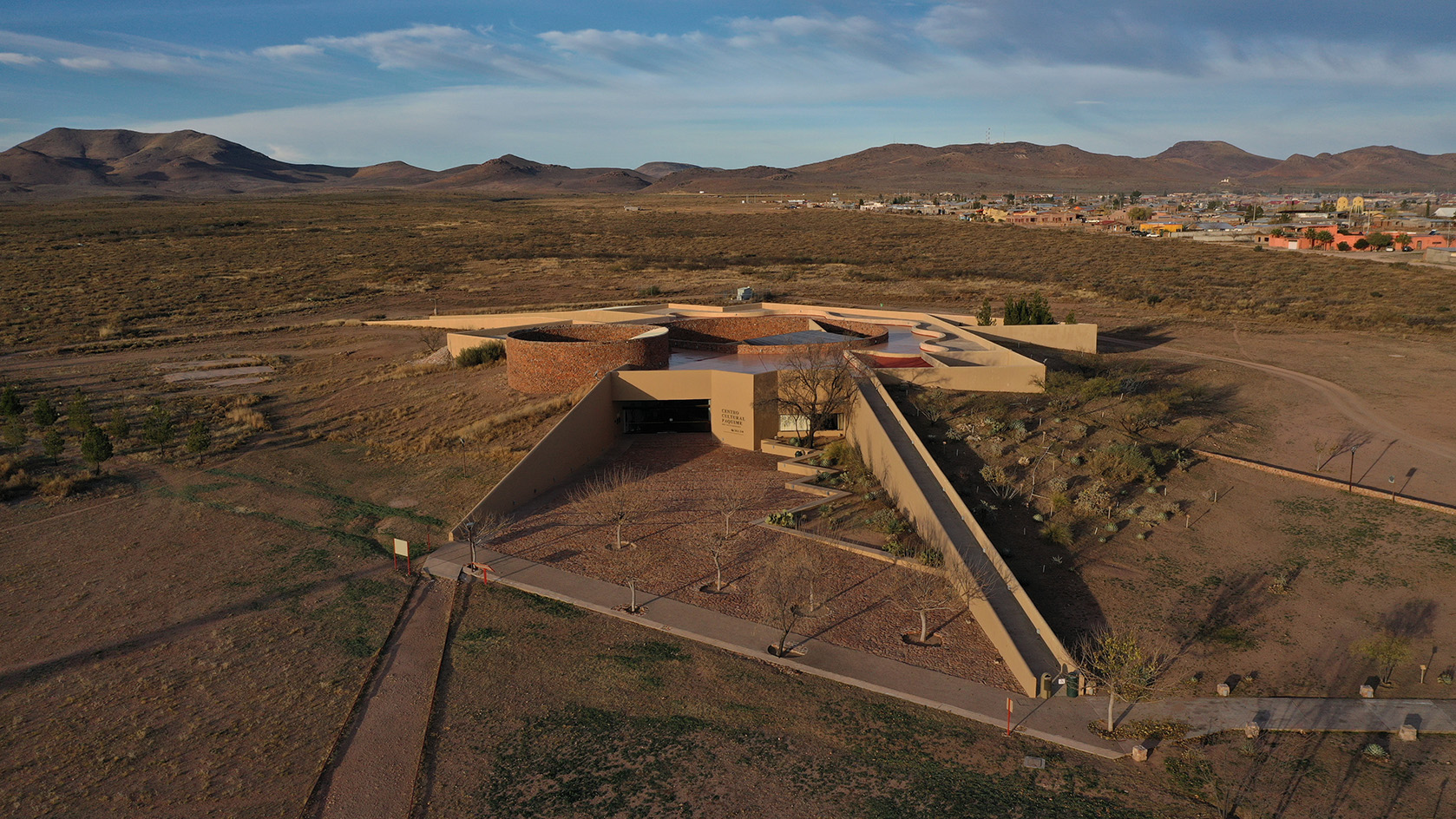 Mexican landscape architect Mario Schjetnan's Grupo de Diseño wins 2025 Oberlander Prize
Mexican landscape architect Mario Schjetnan's Grupo de Diseño wins 2025 Oberlander PrizeThe 2025 Oberlander Prize goes to Mexican landscape architect Mario Schjetnan and his studio, Grupo de Diseño, highlighting the creative's motto: 'We have a human right to open space'
-
 The Architecture Edit: Wallpaper’s houses of the month
The Architecture Edit: Wallpaper’s houses of the monthThis September, Wallpaper highlighted a striking mix of architecture – from iconic modernist homes newly up for sale to the dramatic transformation of a crumbling Scottish cottage. These are the projects that caught our eye
-
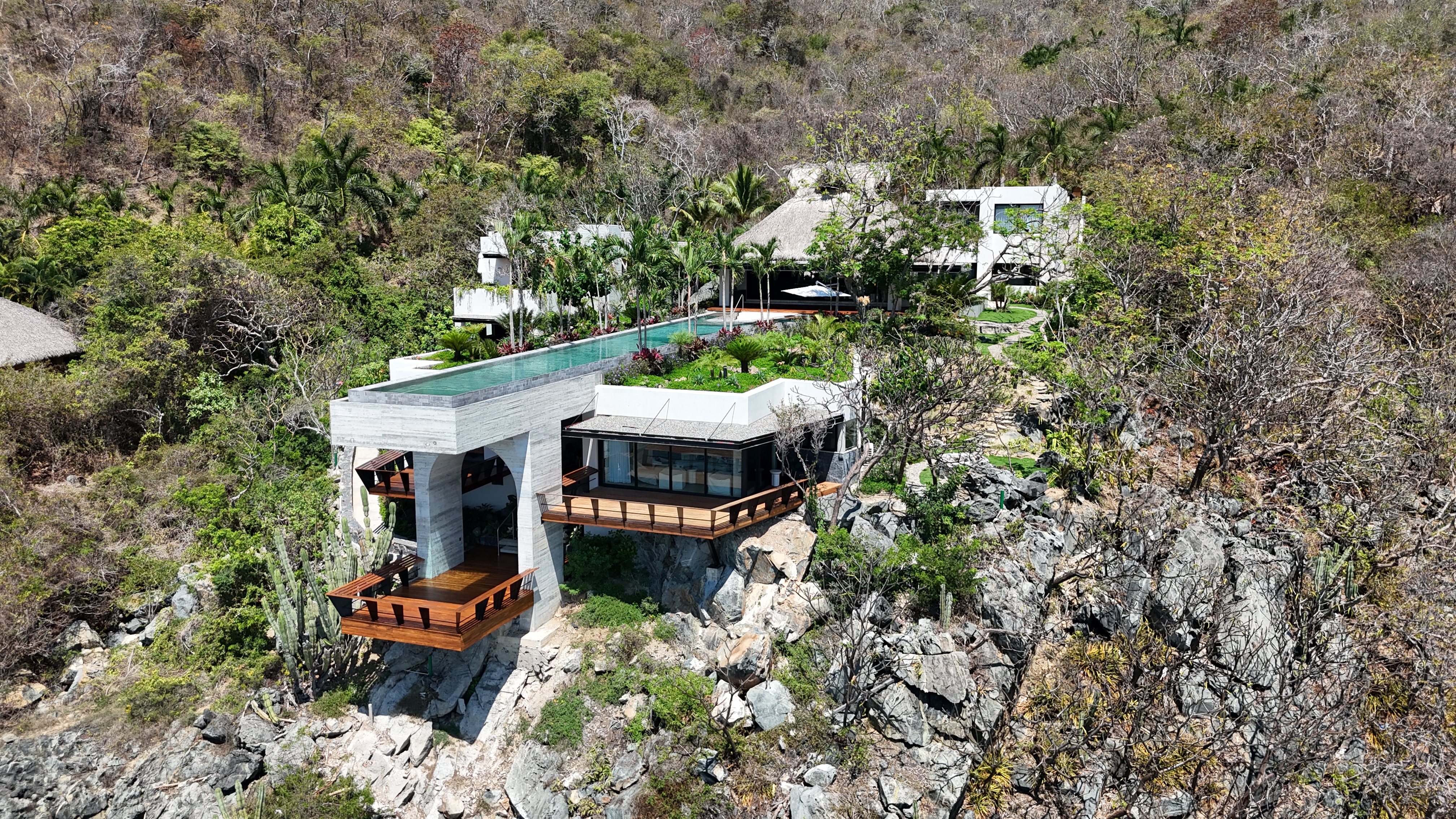 A Mexican clifftop retreat offers both drama, and a sense of place
A Mexican clifftop retreat offers both drama, and a sense of placeCasa Piscina del cielo, a clifftop retreat by Zozaya Arquitectos, creates the perfect blend of drama and cosiness on Mexico's Pacific Coast
-
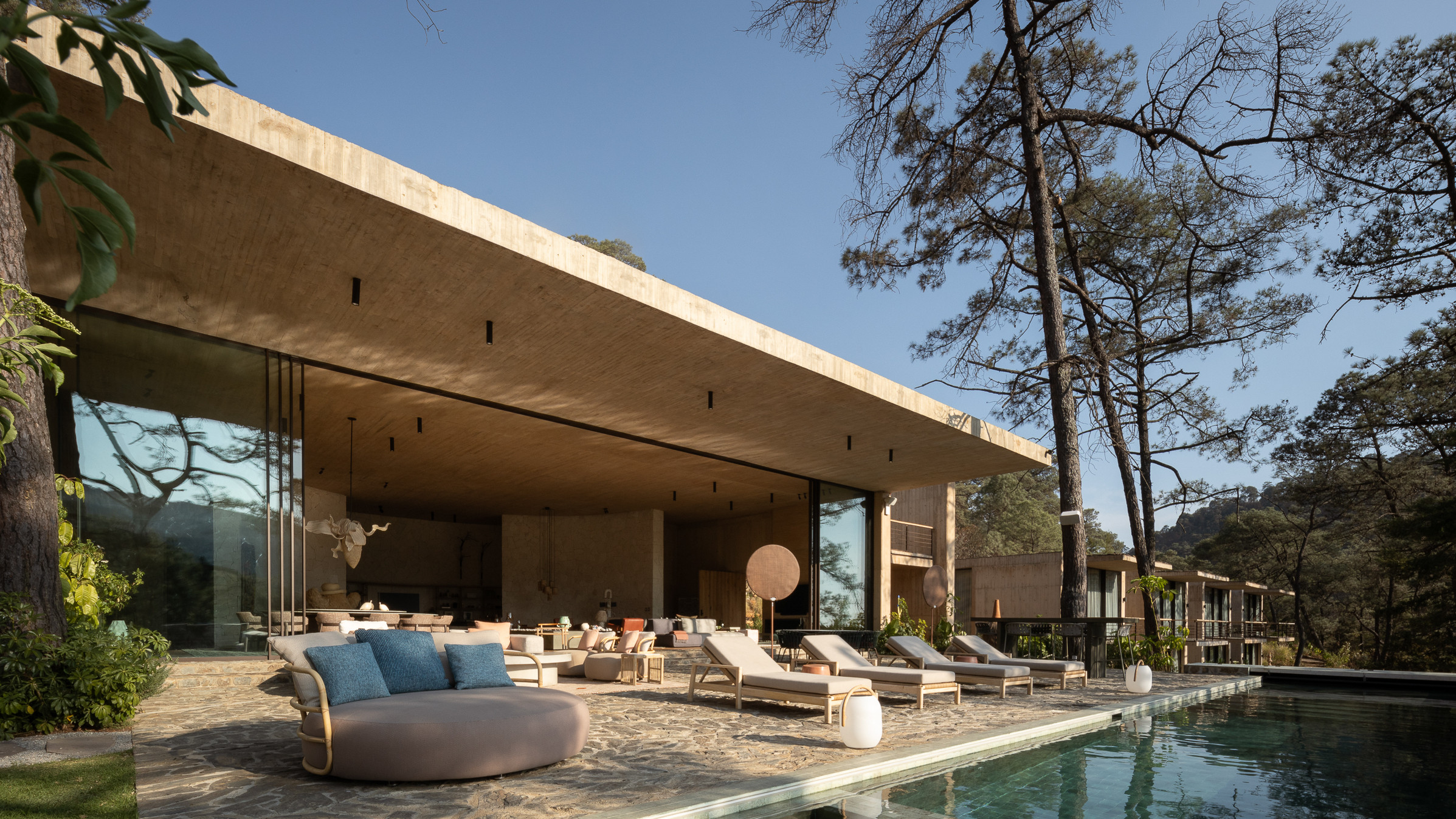 Broken up into six pavilions, this brutalist Mexican house is embedded in the landscape
Broken up into six pavilions, this brutalist Mexican house is embedded in the landscapeSordo Madaleno’s brutalist Mexican house, Rancho del Bosque, is divided up into a series of pavilions to preserve the character of its hillside site, combining concrete, curves and far-reaching views
-
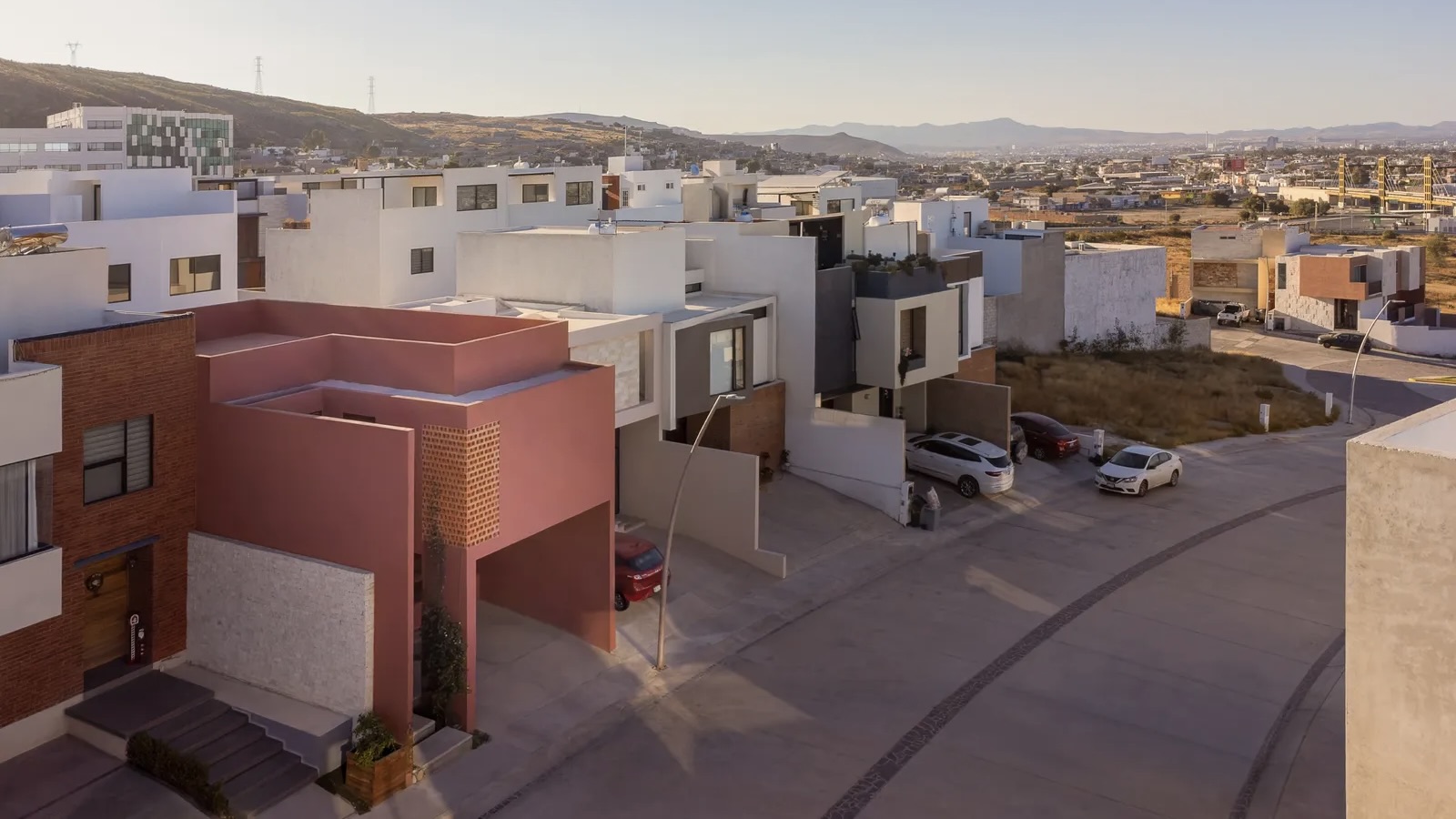 The Architecture Edit: Wallpaper’s houses of the month
The Architecture Edit: Wallpaper’s houses of the monthWallpaper* has spotlighted an array of remarkable architecture in the past month – from a pink desert home to structures that appears to float above the ground. These are the houses and buildings that most captured our attention in August 2025
-
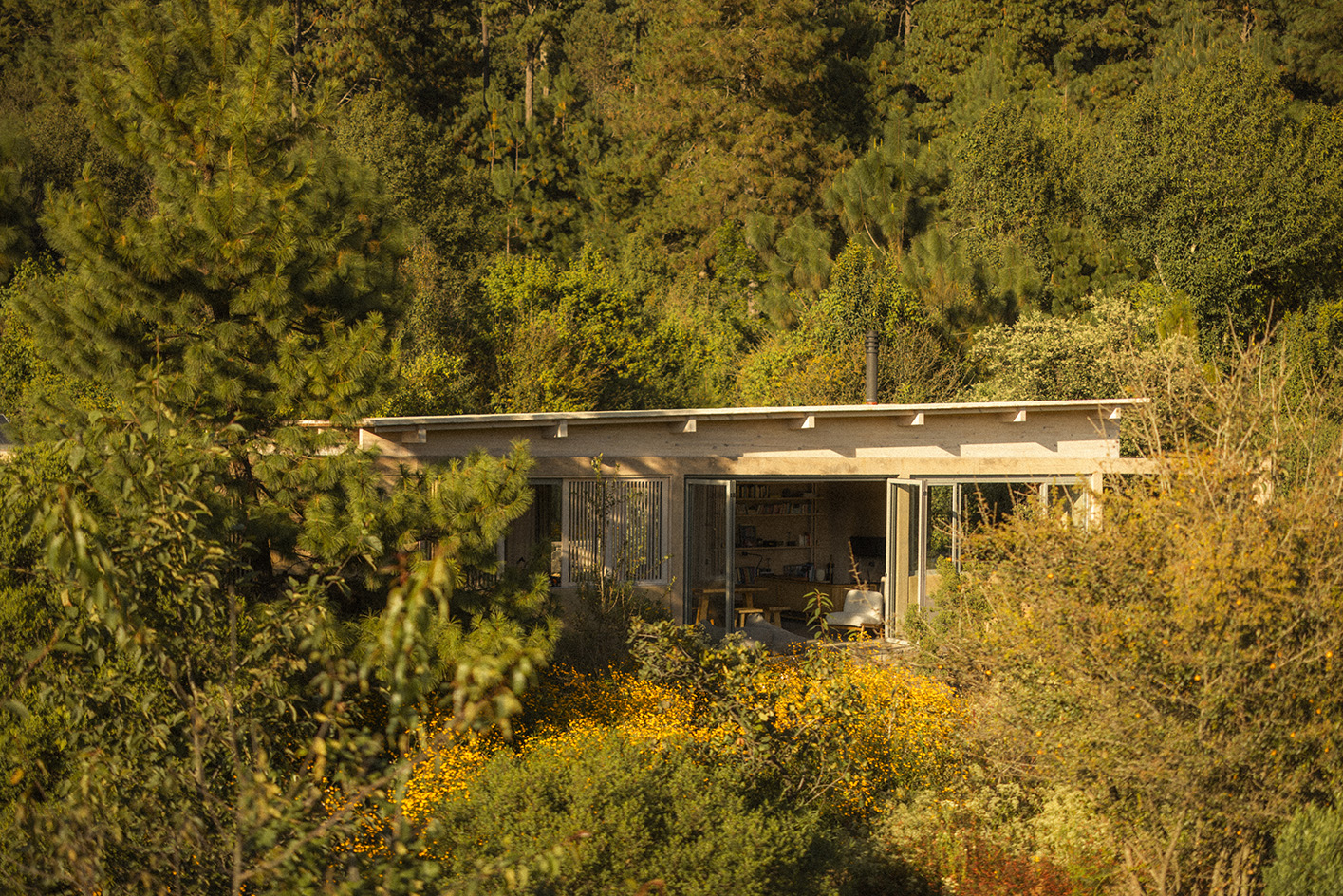 Estudio Ome on how the goal of its landscapes ‘is to provoke, even through a subtle detail, an experience’
Estudio Ome on how the goal of its landscapes ‘is to provoke, even through a subtle detail, an experience’The Mexico City-based practice explores landscape architecture in Mexico, France and beyond, seeking to unite ‘art and ecology’
-
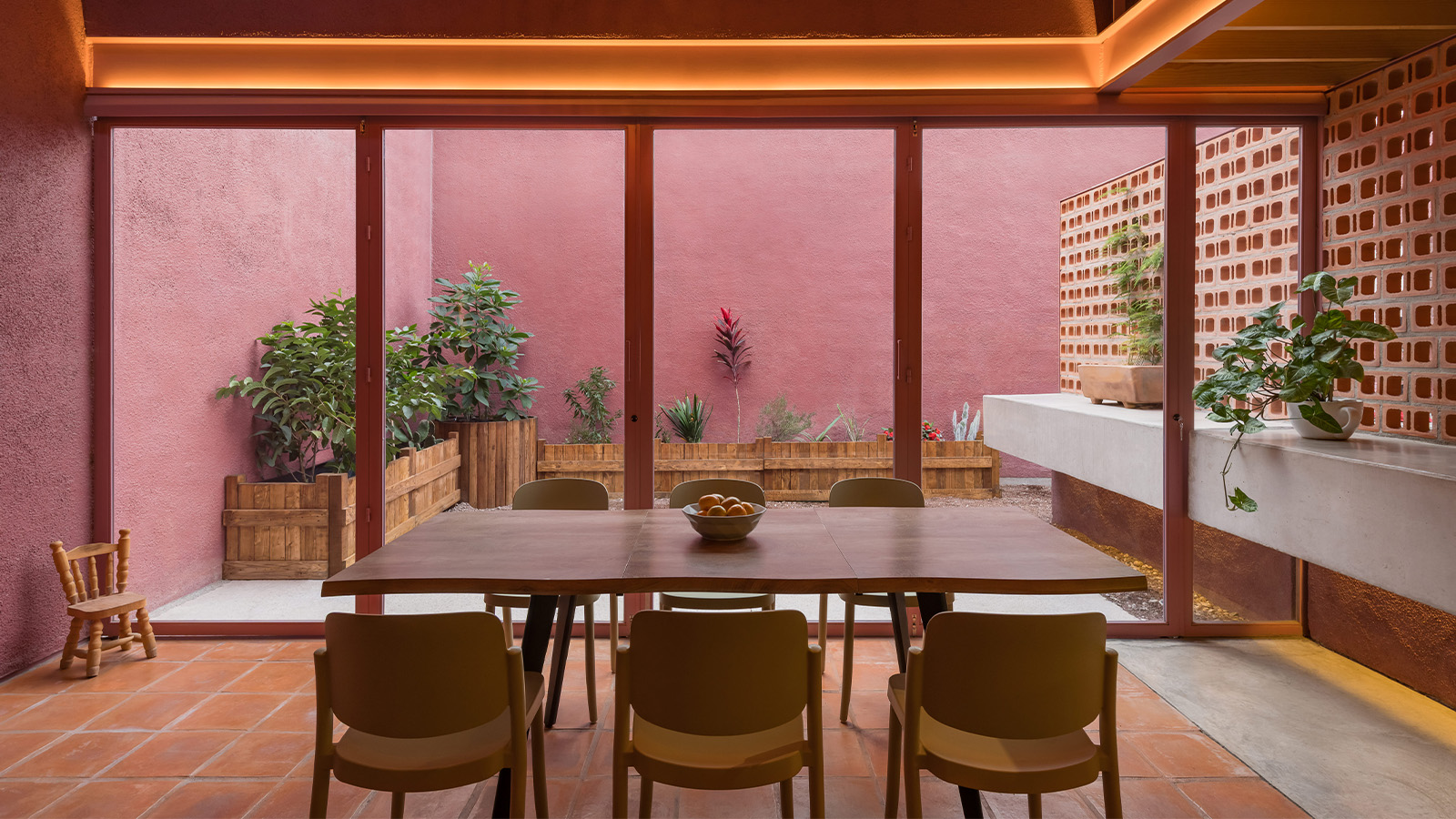 Pretty in cactus-inspired pink, this Mexican desert house responds to its arid context
Pretty in cactus-inspired pink, this Mexican desert house responds to its arid contextCasa Cardona, a pink house by architects Sensacional Dinamica Mexicana, is a multigenerational home that celebrates colour and changing light